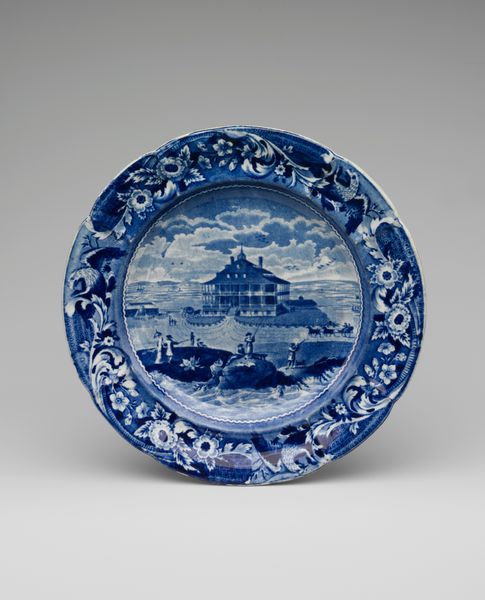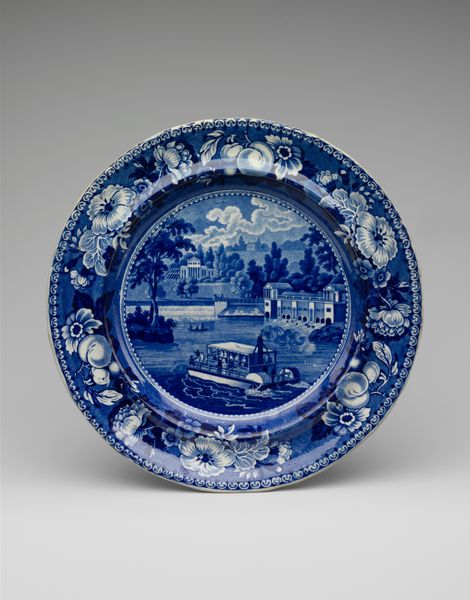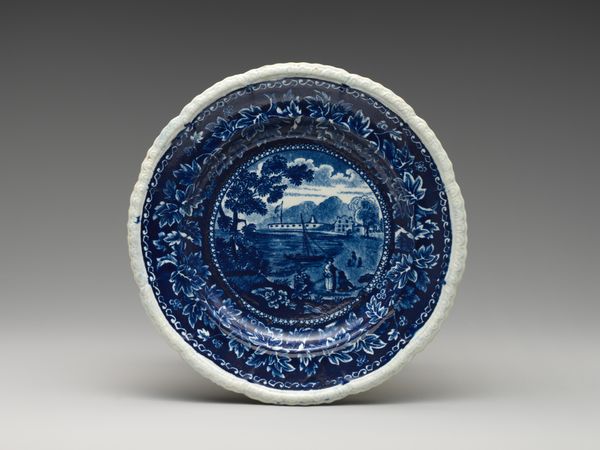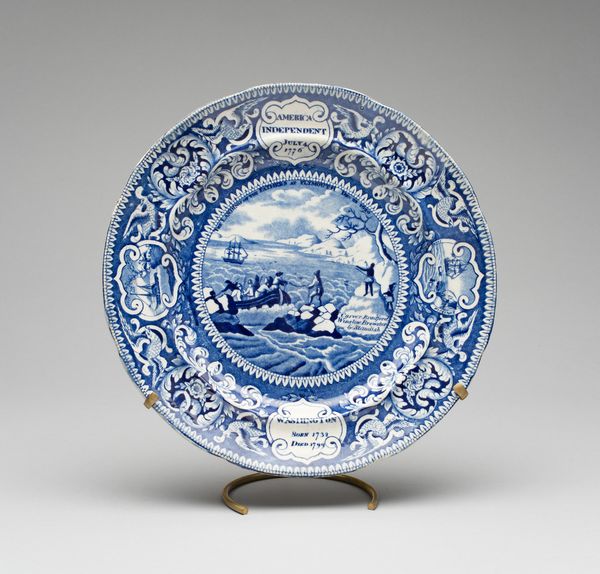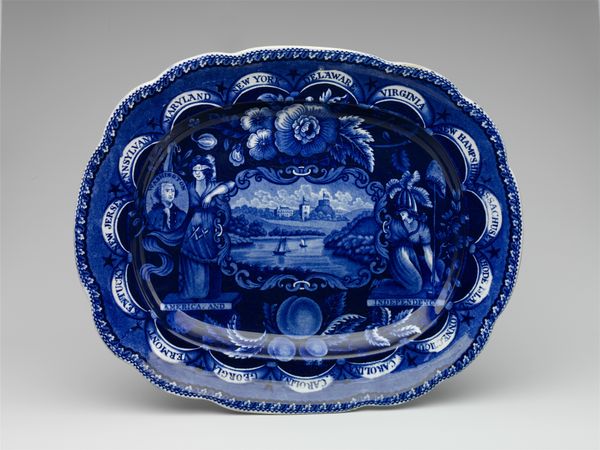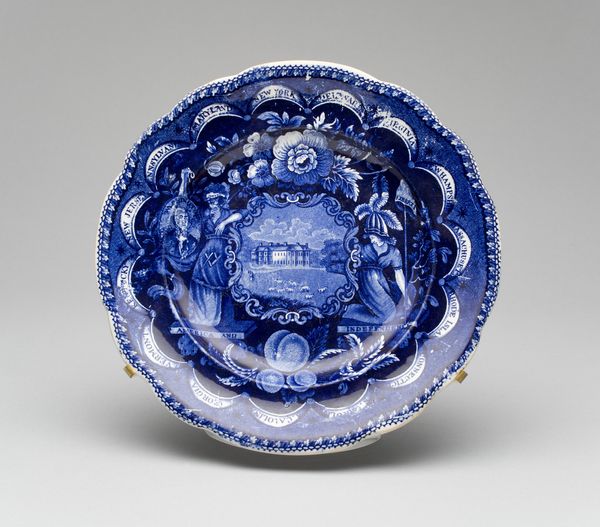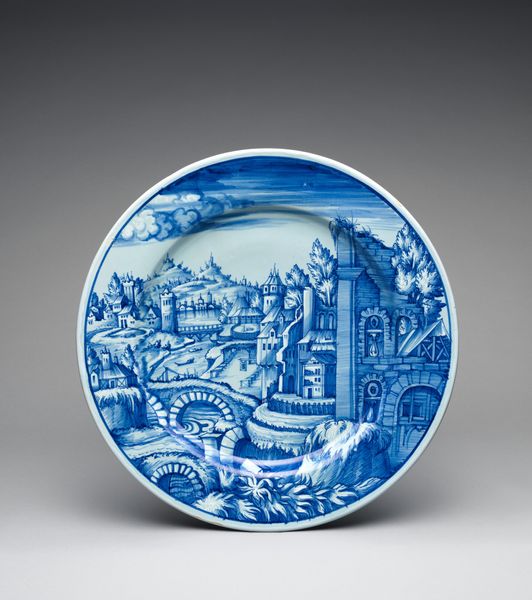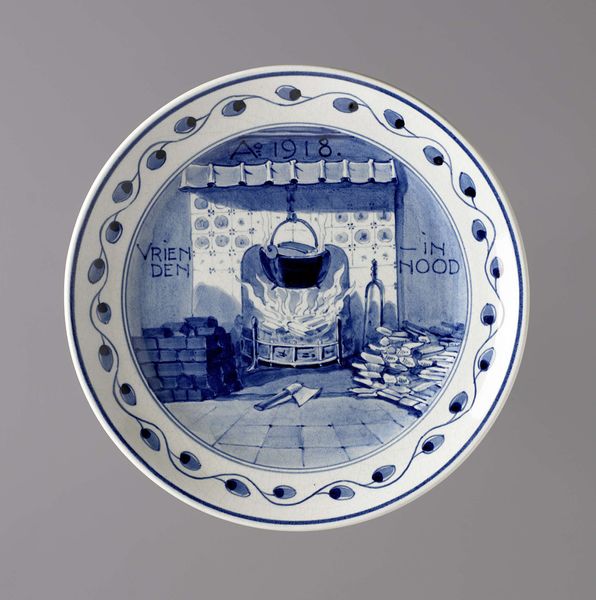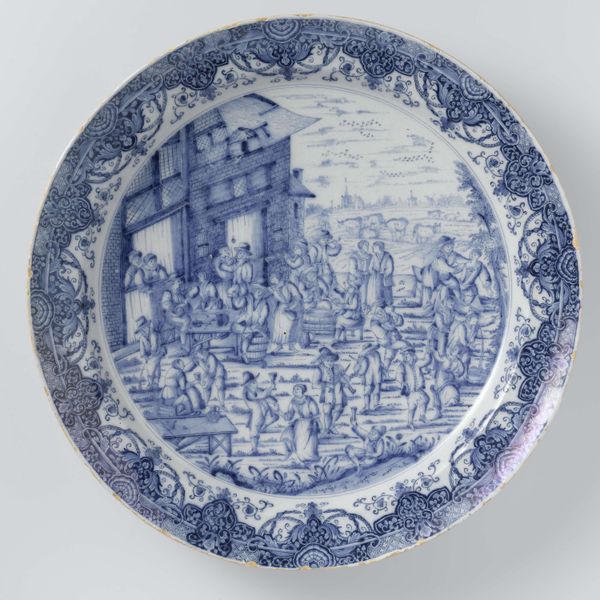
print, ceramic
# print
#
landscape
#
ceramic
#
vessel
#
england
#
ceramic
#
genre-painting
#
decorative-art
Dimensions: diam. 22.5 cm (8 7/8 in.)
Copyright: Public Domain
Curator: Before us is a plate created by James Clews, likely sometime between 1827 and 1836. It's currently held here at The Art Institute of Chicago. Editor: It's so evocative! A classic blue and white, transfer-printed scene…a little romantic, a little nostalgic, very domestic. The cobalt gives it a crisp feel, despite the subject's quaintness. Curator: Precisely. The color and imagery, so closely associated with Staffordshire pottery of the time, became hugely popular in America as well. The central image displays an American town scene complete with church and common green. These landscapes represented stability and order. Editor: It makes me consider the labour. Who created this design? How were these printed images then transferred to plates? What role did child labour have in its mass manufacture, and who actually used this on their tables? We have the final product here, neatly displayed, but a whole industrial process hides behind it. Curator: Absolutely, but even within that process, certain decisions were made for their visual or symbolic resonance. Look at how that single tree is prominently placed in the center foreground – almost a visual bridge between the earthly realm of the village and the aspiration toward heaven symbolized by the church spire. And what is the symbolism in this image being mass produced? Editor: You are right, while maybe initially symbolic and romantic for the middle class, its replication ultimately led to the image becoming simply a feature on a dining set as these landscapes became further removed from lived reality. Curator: Yes. Consider this "Plate" then, a portal not only to another time but also to a dialogue about art, society, and the echoes that imagery carries through time. Editor: Well put. It just shows, even the simplest mass produced item contains multitudes once we start considering all the angles of production and meaning making.
Comments
No comments
Be the first to comment and join the conversation on the ultimate creative platform.
